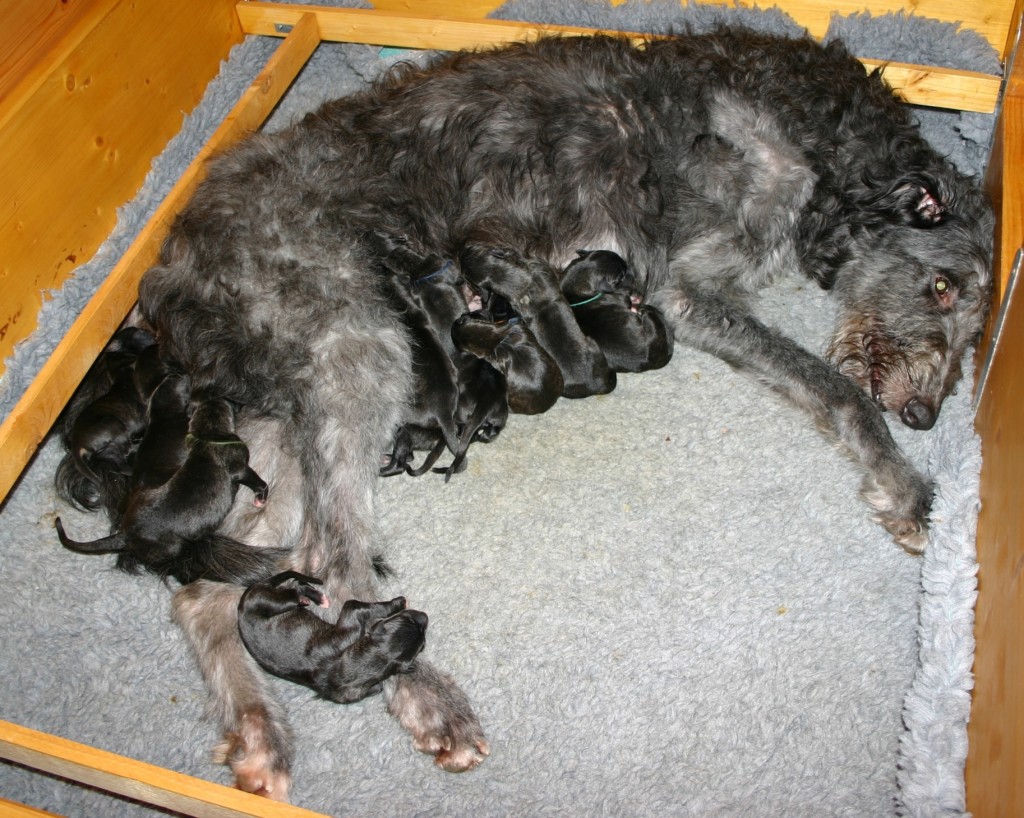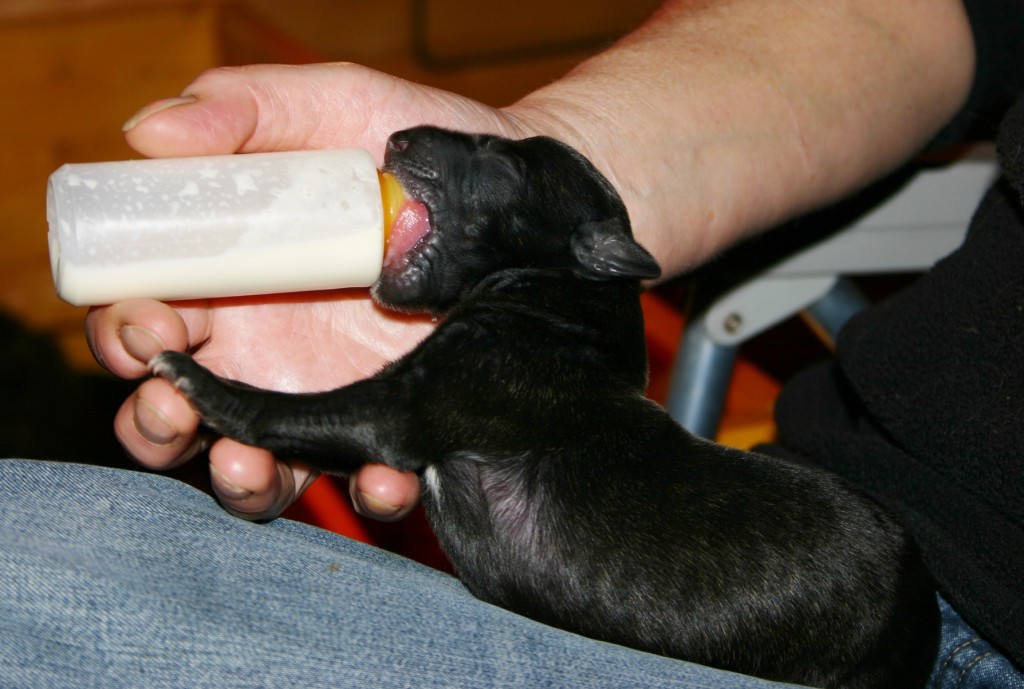 Thoughts On Puppy Milk Replacers
Thoughts On Puppy Milk Replacers
Thoughts On Puppy Milk Replacers
Most breeders and many rescuers end up having to supplement puppies at some point. Ideally all puppies get at least a day or two of “fresh from their dam” colostrum, but after that, supplementing may be required. Ill health of the dam, a large litter, a pup who has trouble fighting littermates for a fair share, even death of the dam could all be reasons for supplementing puppies.
 But are all puppy milk replacers created equal? And are they truly reasonable substitutes for the dam’s milk? A recent study written up in the June 15, 2014 issue of the Journal of the American Veterinary Medical Association (JAVMA) brings those two concerns into question.
But are all puppy milk replacers created equal? And are they truly reasonable substitutes for the dam’s milk? A recent study written up in the June 15, 2014 issue of the Journal of the American Veterinary Medical Association (JAVMA) brings those two concerns into question.
This study clearly suggests that milk replacers aren’t really total substitutes for your puppies. One area which has been in the news for many species is that of polyunsaturated fatty acids – think DHA (docosahexaenoic acid)and ARA arachidonic acid) in particular. These fatty acids have been associated with normal retinal and brain development in mammals. They are now added to human baby formulas. In puppies they are associated with learning ability, memory and visual acuity. Still, other ingredients are essential for normal, healthy growth as well – including calcium, phosphorus and calories.
Exact nutrient requirements for very young puppies aren’t clearly defined but presumably normal canine milk covers them. When comparing the five samples of milk from nursing dams with puppies two to three weeks old to milk replacers (15 in all were evaluated) some interesting deficiencies came to light.
While protein amounts in most replacers was adequate, the exact amino acid makeup was not. Arginine is an excellent example of this. Arginine is important for canine development, as a deficiency has been associated with cataract development in large breed puppies. Unfortunately cow and goat milk, which is what most puppy milk replacers are based on, tends to be very deficient in this amino acid.
Calcium levels tended to be lower in the milk replacers and often the calcium to phosphorus ratios were not ideal. Fatty acids amounts were generally not adequate either with DHA and ARA often totally absent in some of the replacers. Sugar levels, especially lactose (no surprise) tended to be higher in the milk replacers than in the normal milk.
Another concern of the authors is that feeding directions tended to be based on volume, not caloric density. In addition, information to guide owners as to how to adjust the amount fed as the puppy grew were not clear.
This brings us back to what a breeder who needs to supplement puppies should do. Homemade replacer recipes may not be any more balanced and complete than the commercial ones. At least with a commercial milk replacer you do know what you are feeding, even if it is not perfect.
The puppies we tend to supplement are generally the smaller ones or the weaker ones. Those are the puppies actually MOST in need of the better diet. So the stronger, bigger puppies may need to be pulled off periodically to let the puppies in most need nurse first. Give the occasional milk replacer feeding to the bigger pups, not the struggling ones.
The ideal solution of course is to find a dam with puppies about the same age who is willing to take on some additional puppies. A bitch with three puppies might easily take on three more and ease the burden of a bitch with 10 or 12 puppies. Make sure your nursing bitch is being fed optimally so she can produce top quality milk for her pups. If you end up supplementing puppies with milk replacer consider consulting a veterinary nutritionist to be sure your puppies are getting adequate nutrition. He/she can guide you as to any additional supplements you might want to give.
The reality is that breeders may have to use commercial milk replacers at times. Check the nutrients carefully, get expert advice on any additional supplements and make sure the pups who need it the most get their dam’s milk first.